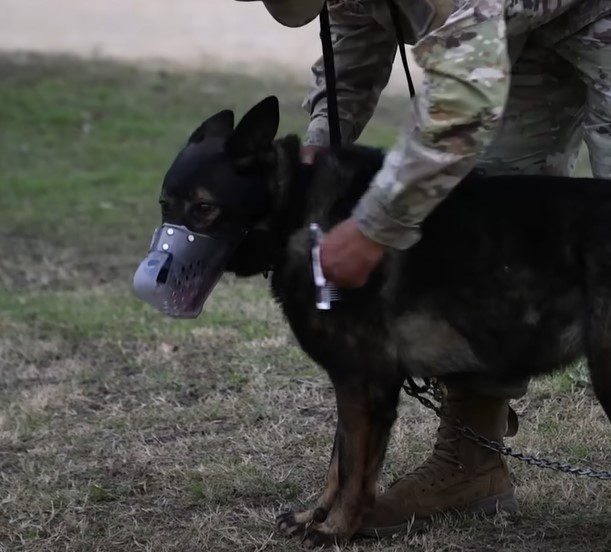“A glimpse into what goes into training a military dog for service”
Military dogs have an important job. Each day they protect and serve their country. Their jobs are often very dangerous and they are highly trained to perform them.
Their training is serious business. They must be able to execute commands, often in highly stressful situations. Mistakes are risky for both dog and handler so their ability to perform is paramount to their success and their ability to save lives.

At any given time, about 1,600 military working dogs are serving in every branch of the United States military. But all the dogs start their training at Lackland Airforce Base in San Antonio, Texas.
Both dogs and handlers are trained at Lackland. Both are vital assets to the safety and security of the military and the public they serve. A lot of time, effort, and hard work goes into training yet because of high demand, it seems as if there can’t get through it fast enough.

Several hundred 1–3-year-old dogs are in training at Lackland at any given time. It takes 120 days to complete each training program. The programs are split into two blocks, detection training, and patrol training.
In patrol training, the dogs are taught to chase after a suspect that the military is unable to apprehend. The dogs are taught to control their aggression so it’s a nonlethal or less-than-lethal option.

But first, all the dogs are obedience trained so that they can perform during high-intensity situations. The training is marker and reward based. They are also trained to boost their confidence on an agility course.
About 400 dogs are purchased for the program every year and the rest come from breeding programs at Lackland. They do this in case they ever face a supply chain problem since most dogs come from overseas.
The puppies from the breeding program stay there until they are 6 weeks old. After that, they are sent to foster homes and then are returned to the program when they reach 7 months old. At 7 months, they are tested to determine if they qualify as military working dogs.

The puppies are then tested again at 1-year-old. About 50 dogs are chosen to continue in their training where they will learn things like controlled aggression, apprehension, standing down, maintaining position, stability in the field, searching, and scouting.
But the dogs are not the only ones learning. Handlers are trained to manage their dogs and pick up on any changes in behavior. After training is over, about 90% of dogs will be sent to United States military bases all over the world.

We hope you found this video interesting. Please feel free to share with your friends.